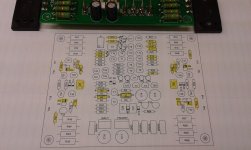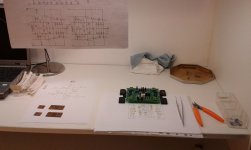Nice paper.... also saw his web site.... good references there but hasnt been updated since 2010. where is he today? [I fear the worse].
Mainly, I am wondering if this concept can be used here for the ExtremA to keep the distortion down when leaving class A.
THx-RNMarsh
No idea, he started teaching the year I came to MIT but I never had cause to take any of his courses.
Paul knows without a filter and 2,8MHz can have full amplitude.
No, 1,4MHz, sampling law applies here too.
It is obvious that you do not know what you're talking.
No, 1,4MHz, sampling law applies here too.
It is obvious that you do not know what you're talking.
No filter is not sin, only the original rectangle

Last edited:
With 2,8MHz sampling the product can not be created ( a rectangular function ) , which would include the frequency 2,8MHz ! 

On the whole 20kHz period is a total of 140 samples (2,8MHz / 20kHz = 140). 35 samples on the rising edge of the signal. What would be the quality at full amplitude?
Yes , it brings uncertainty amplitude, modulation.
Yes , it brings uncertainty amplitude, modulation.
To look at the principles and error spectrum multi level
Parametric SDM encoder for SACD in high-resolution digital audio
I fitted components to the PCB according to the simulation model created by BV. Today I could measure how the new circuit works.
What are the differences in measurement?
What are the differences hearings?
I fitted components to the PCB according to the simulation model created by BV. Today I could measure how the new circuit works.
What changes are these exactly? It helps to be very meticulous here as the devil usually is in the details.
According to the diagram... post #415 http://www.diyaudio.com/forums/solid-state/96853-extrema-class-strikes-back-42.html#post4126803
No, according this one.. Improved clipping behaviour.
If you want high quality HiFi audio sound, then the limitation may never work.
If you work in clipping, then it's bad.
@Federmann,
Can we please keep the off-topic, often opinionated, replies to a minimum? Thank you!
Can we please keep the off-topic, often opinionated, replies to a minimum? Thank you!
@BV,
Thanks for the feedback and the .asc. Could you perhaps post a list of changes and explain what you've done exactly. I can see a number of diodes being added, some others removed and a variety of capacitors being added, as well as multiple RC networks being added/changed.
Thanks for the feedback and the .asc. Could you perhaps post a list of changes and explain what you've done exactly. I can see a number of diodes being added, some others removed and a variety of capacitors being added, as well as multiple RC networks being added/changed.
I am very curious about results that JMD01 will get from the modified circuit. I believe he will share the results with us.
This is the amplifier built that I have measured and analyzed in Prague and posted some measurements here.
This is the amplifier built that I have measured and analyzed in Prague and posted some measurements here.
I am very curious about results that JMD01 will get from the modified circuit. I believe he will share the results with us.
This is the amplifier built that I have measured and analyzed in Prague and posted some measurements here.
Ah, excellent, if JMD01 is willing to explore other options as well I'd be very interested in seeing the results of the less invasive modifications I've proposed previously.
I don't have good news. The amplifier is needed to fine tune. Currently is slightly unstable.
Best regards
Bohdan
Best regards
Bohdan
Last edited:
Adjustments are unfortunate modifications lead to high frequency oscillations and instability.
How did you know? Have you measured that amplifier, Federmann?
- Status
- Not open for further replies.
- Home
- Amplifiers
- Solid State
- ExtremA, class-A strikes back?

